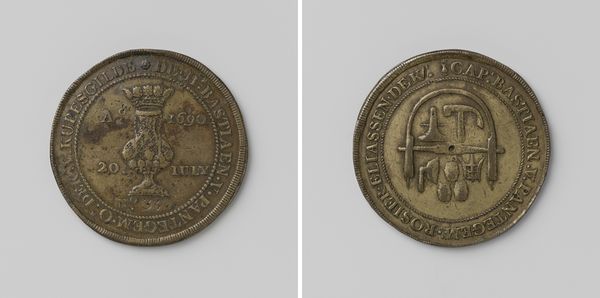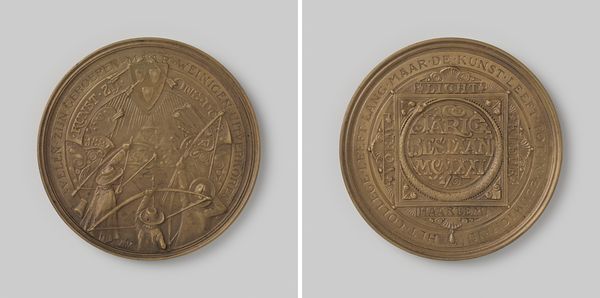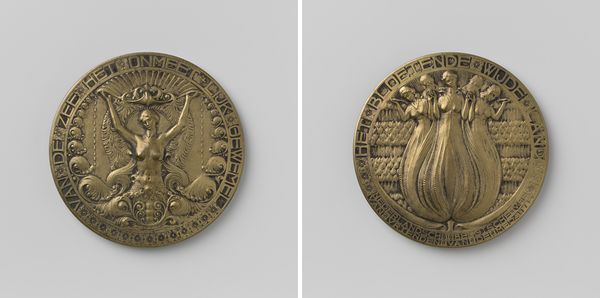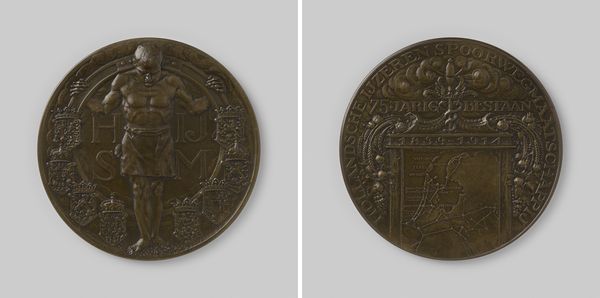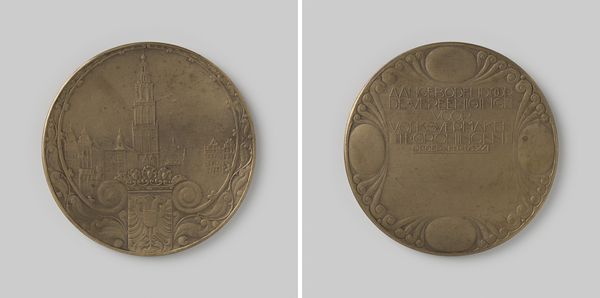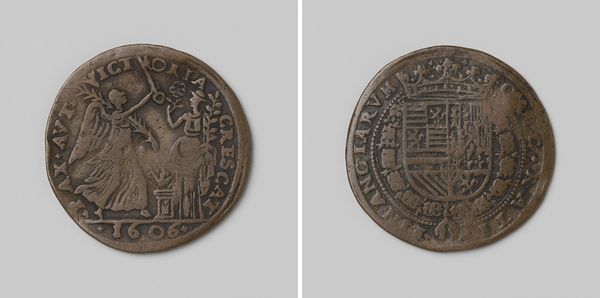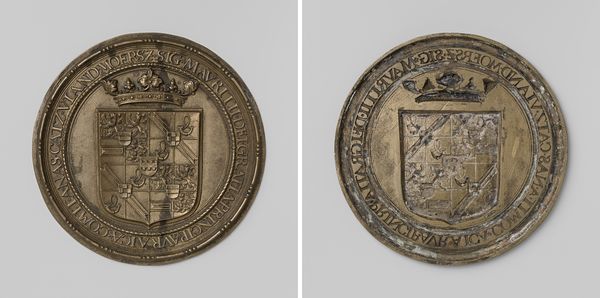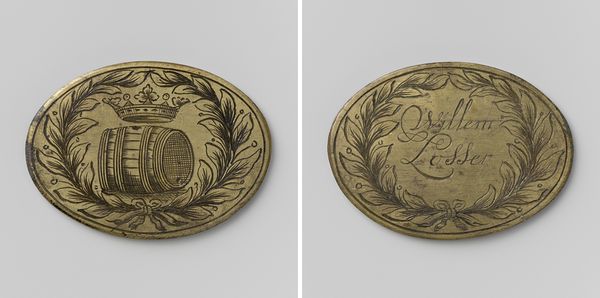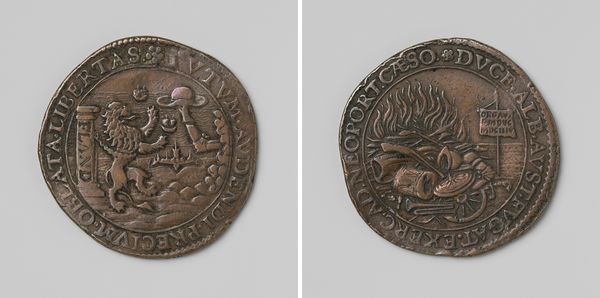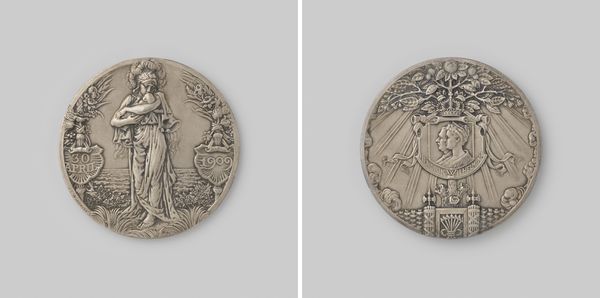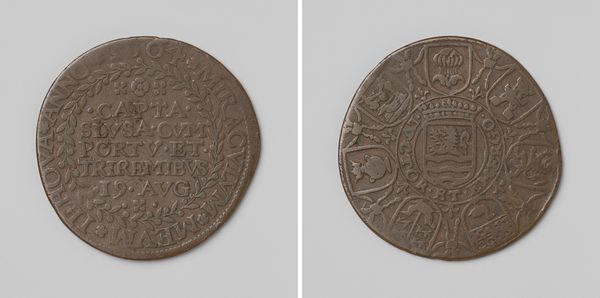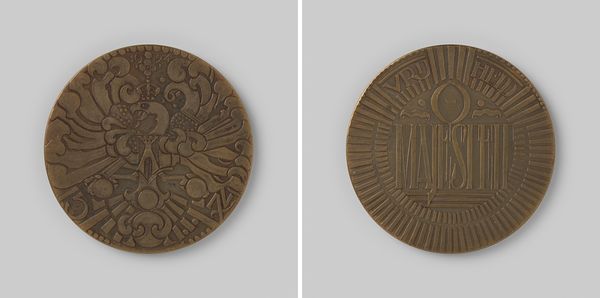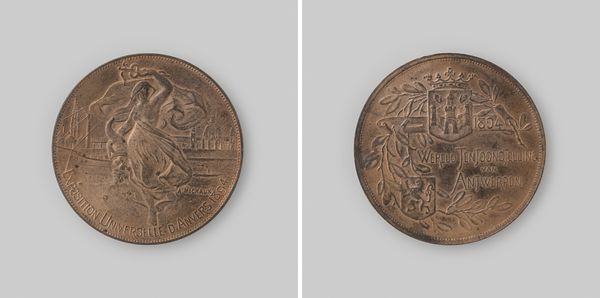
metal, relief, bronze, sculpture
#
medieval
#
metal
#
relief
#
bronze
#
sculpture
Dimensions: diameter 6.5 cm, weight 108.32 gr
Copyright: Rijks Museum: Open Domain
Curator: What's your take on Johannes Cornelis Wienecke's "Steunpenning 1914," this bronze relief at the Rijksmuseum? Editor: It's interesting how commemorative medals can capture a specific moment in time. Looking at this, particularly the regal imagery on one side and the palm fronds on the other, I sense a nation grappling with both tradition and a yearning for peace amidst looming conflict. What are your thoughts? Curator: Absolutely. Notice the date – 1914. This wasn't just a moment, it was a rupture. The coin isn't just about national identity, with the heraldic lion and motto “Je Maintiendrai,” but also about navigating the complexities of neutrality during the First World War. Editor: Neutrality? I hadn't considered that. So the palm fronds on the reverse symbolize a desire for peace and non-involvement? Curator: It's more complicated than a simple desire, isn’t it? Neutrality, particularly for a colonial power, is a political stance deeply embedded in global power dynamics. Who gets to be neutral, and at what cost? How does this declaration of neutrality impact their colonies? Editor: That's a powerful question. It makes me wonder about the potential disconnect between the message on the medal and the realities of Dutch colonialism at the time. Are we to assume the declaration on the coin does not include the colonies, and only serves the motherland? Curator: Exactly. It invites us to think critically about the narratives of nationhood and the often-invisible power structures that shape them. This isn't just a medal, but a microcosm of a nation at a crossroads, performing neutrality on a global stage while navigating its own internal contradictions. Editor: I see it now. The medal serves as a reminder of how history and political symbolism must be critically examined when considering global power relations. Thanks for helping me to explore a different dimension of interpreting art. Curator: My pleasure. This critical engagement is exactly what art history should be about: holding a dialogue between then and now, between power and representation.
Comments
No comments
Be the first to comment and join the conversation on the ultimate creative platform.

